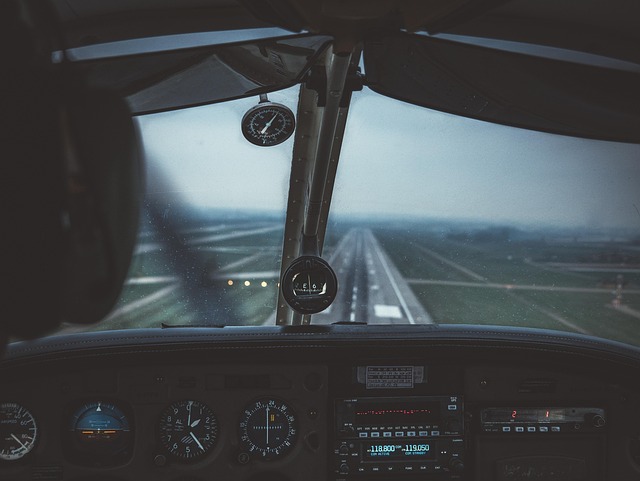Taking Flight: A Comprehensive Guide to Aviation Training and Airport Careers
The aviation industry offers a diverse range of career opportunities, from pilots and flight attendants to ground crew and air traffic controllers. Whether you're looking to soar through the skies or keep operations running smoothly on the ground, proper training is essential. This guide will explore various aspects of aviation training, popular airport job roles, and the development opportunities available in this exciting field.

What are the main aviation training programs for pilots and technicians?
Aviation training programs for pilots and technicians are diverse and specialized. For aspiring pilots, the journey typically begins with obtaining a Private Pilot License (PPL), followed by advanced certifications such as the Commercial Pilot License (CPL) and Airline Transport Pilot License (ATPL). These programs involve both theoretical knowledge and practical flight training.
For aviation technicians, programs focus on aircraft maintenance, repair, and overhaul. Popular certifications include the Airframe and Powerplant (A&P) license, which covers both aircraft structures and engines. Avionics technicians may pursue specialized training in aircraft electrical and electronic systems.
What are the most common airport career opportunities and their salaries?
Airport career opportunities span a wide range of roles, each with its own salary potential. Air traffic controllers, responsible for managing aircraft movement, often command high salaries due to the critical nature of their work. Pilots, especially those working for major airlines, can also expect competitive compensation packages.
Other common airport careers include:
-
Flight attendants
-
Aircraft mechanics and technicians
-
Airport operations managers
-
Security personnel
-
Customer service representatives
Salaries vary depending on factors such as experience, location, and employer. For instance, entry-level flight attendants might start around $30,000 annually, while experienced pilots at major airlines can earn well over $200,000 per year.
How can one start a career in aviation?
Starting a career in aviation often begins with identifying your area of interest and researching the specific requirements for that role. For many positions, a high school diploma is the minimum educational requirement, though some roles may require a bachelor’s degree or specialized training.
Key steps to launch an aviation career include:
-
Research different aviation careers to find your passion
-
Obtain necessary education and certifications
-
Gain relevant experience through internships or entry-level positions
-
Network within the industry
-
Stay updated on industry trends and technologies
Many aspiring aviation professionals start by pursuing a degree in aviation, aerospace engineering, or a related field from an accredited institution.
What are the requirements for becoming a pilot or flight attendant?
Becoming a pilot requires a combination of education, training, and physical qualifications. The general requirements include:
-
Being at least 18 years old (for commercial pilots)
-
Holding a high school diploma or equivalent
-
Obtaining a bachelor’s degree (preferred by many airlines)
-
Completing flight training and obtaining necessary licenses
-
Passing medical examinations and maintaining good health
-
Accumulating flight hours (typically 1,500 hours for airline pilots)
For flight attendants, requirements typically include:
-
Being at least 18 years old
-
Having a high school diploma or equivalent
-
Possessing excellent customer service skills
-
Meeting physical requirements (height, vision, etc.)
-
Completing airline-specific training programs
-
Obtaining FAA certification
Both roles require strong communication skills, the ability to remain calm under pressure, and a commitment to safety.
What are the growth prospects and development paths in aviation?
The aviation industry offers robust growth prospects and diverse development paths. According to the Bureau of Labor Statistics, employment of airline and commercial pilots is projected to grow 6 percent from 2021 to 2031, about as fast as the average for all occupations. The increasing demand for air travel and the need to replace retiring pilots contribute to this growth.
Development paths in aviation are often characterized by progressive advancement and specialization. For instance, a pilot might start with smaller aircraft and regional airlines before moving to larger aircraft and major carriers. Similarly, an aircraft technician could progress to lead technician, supervisor, or even management roles within maintenance operations.
Continuous learning and adaptation to new technologies are crucial for long-term success in aviation. Many professionals pursue additional certifications or transition to related fields such as aviation management, safety inspection, or training and instruction.
How much does aviation training typically cost?
Aviation training costs can vary significantly depending on the specific program and career path. Here’s a breakdown of estimated costs for some common aviation training programs:
| Training Program | Provider Type | Cost Estimation |
|---|---|---|
| Private Pilot License | Flight School | $10,000 - $15,000 |
| Commercial Pilot License | Flight School | $50,000 - $70,000 |
| Airline Transport Pilot License | Flight Academy | $80,000 - $150,000 |
| Aircraft Maintenance Technician | Technical School | $20,000 - $50,000 |
| Flight Attendant Training | Airline | $3,000 - $5,000 (often covered by employer) |
Prices, rates, or cost estimates mentioned in this article are based on the latest available information but may change over time. Independent research is advised before making financial decisions.
It’s important to note that these costs can vary based on factors such as location, program duration, and individual progress. Many aspiring aviation professionals explore financing options, scholarships, or employer-sponsored training programs to manage these expenses.
The aviation industry continues to evolve, offering exciting opportunities for those passionate about flight and air travel. Whether you’re drawn to the cockpit, the cabin, or the countless roles that keep airports running smoothly, proper training and dedication can set you on a path to a rewarding career in this dynamic field. As technology advances and global air travel demands grow, the skies remain full of potential for those ready to embark on an aviation career.




